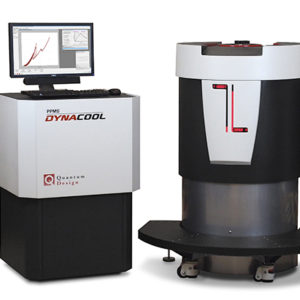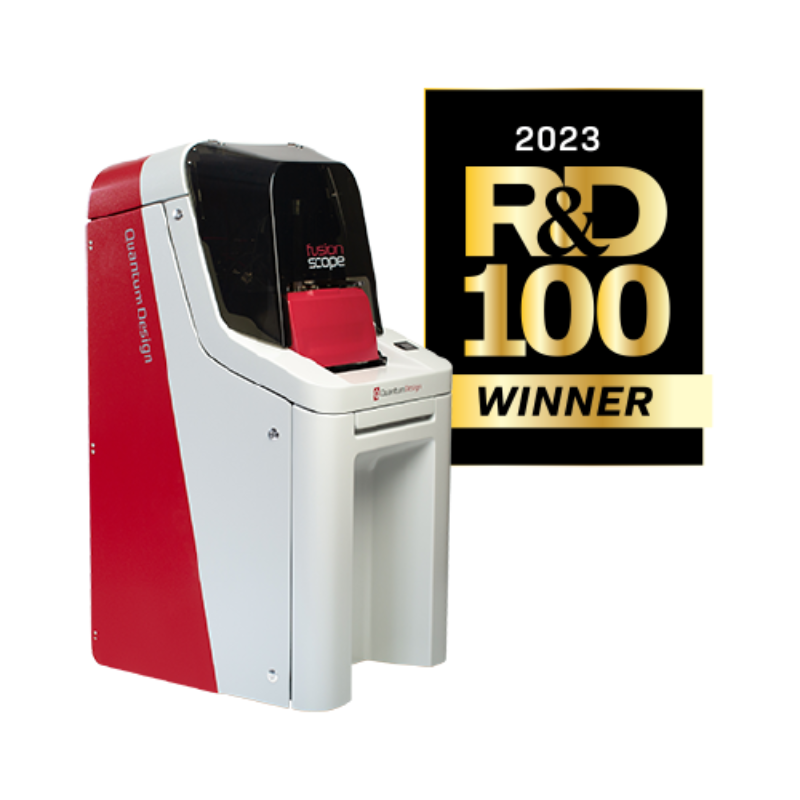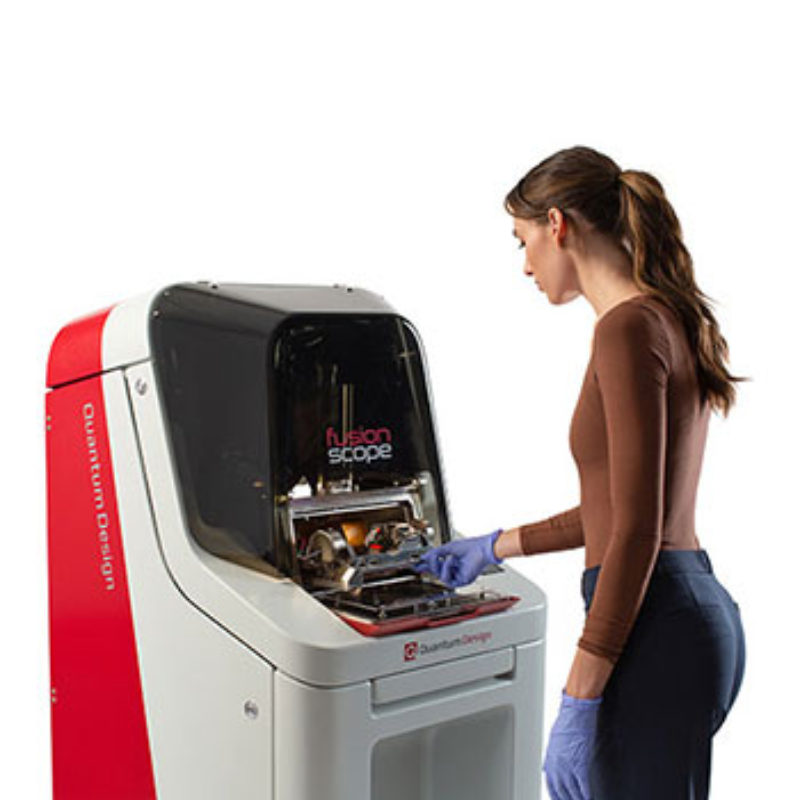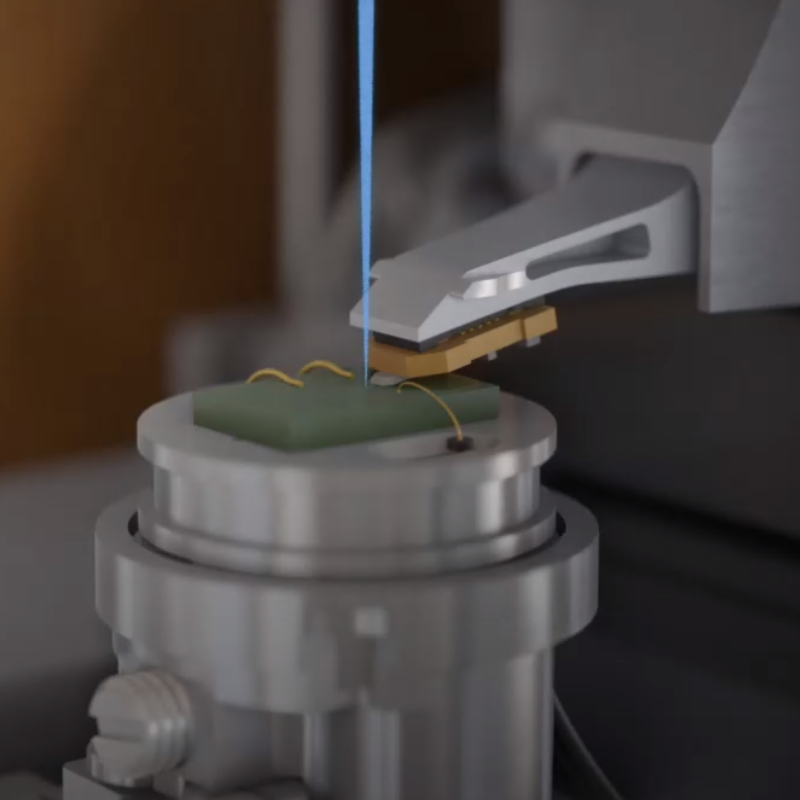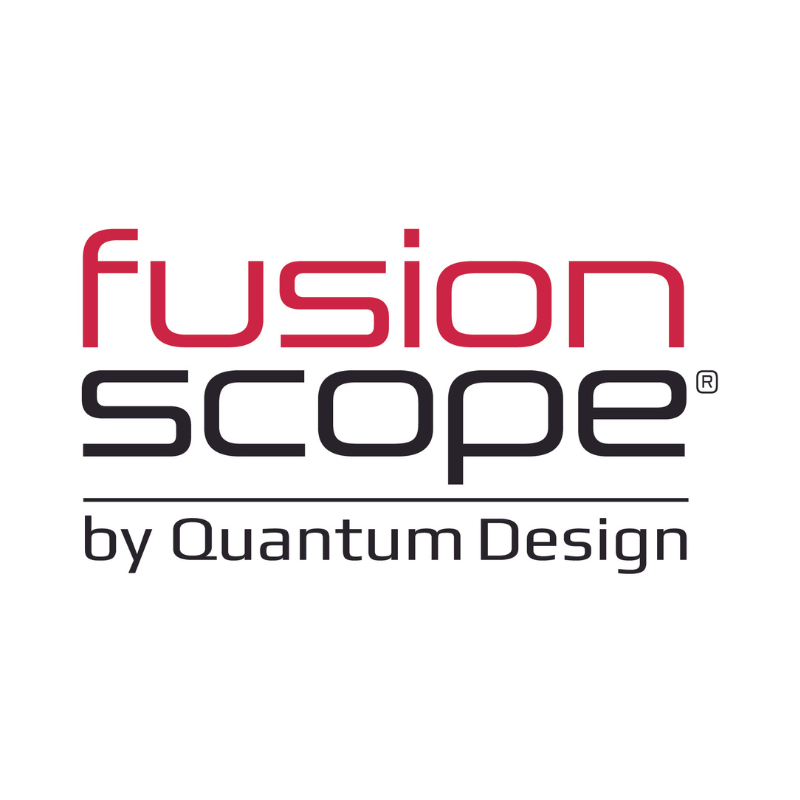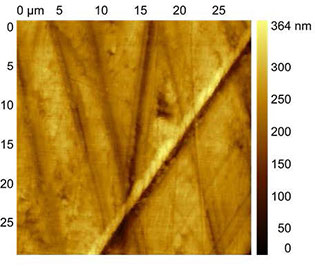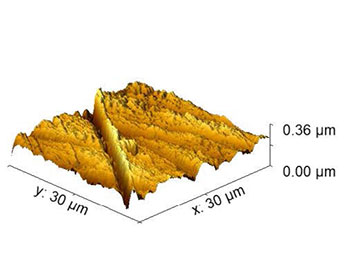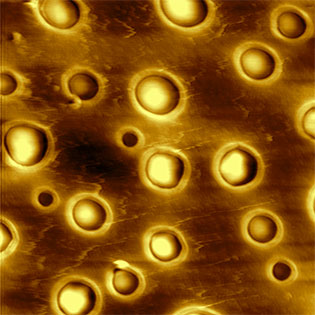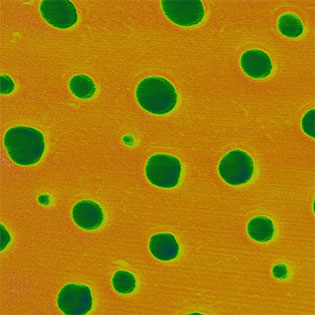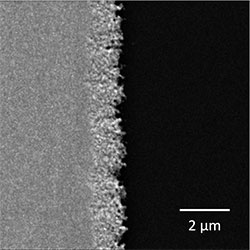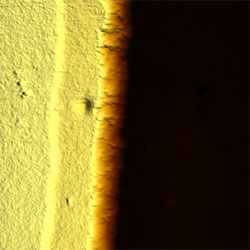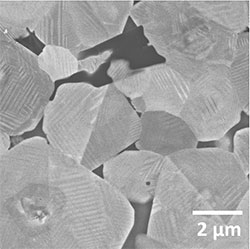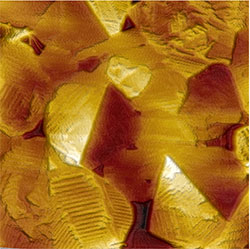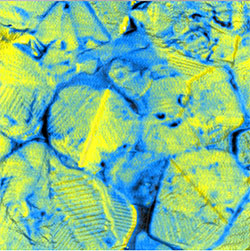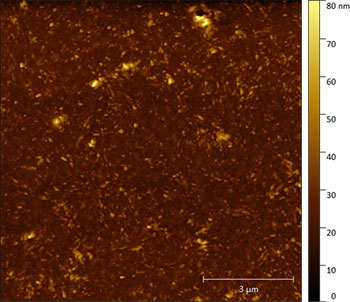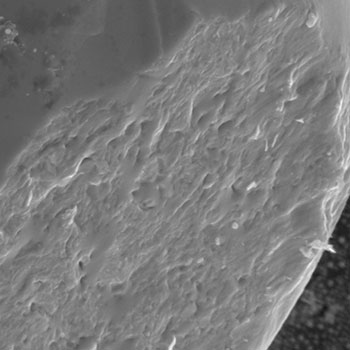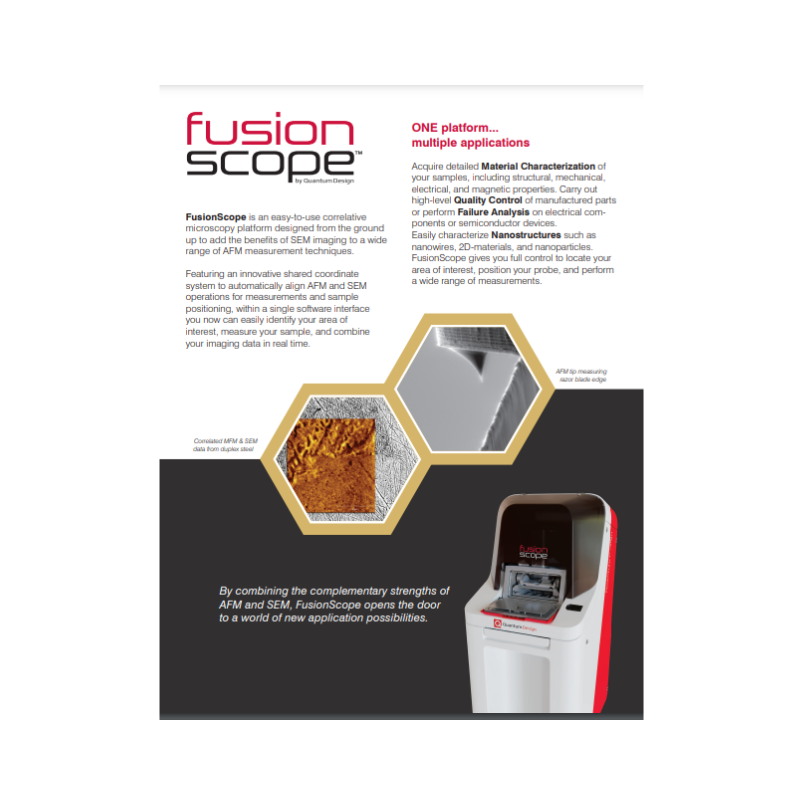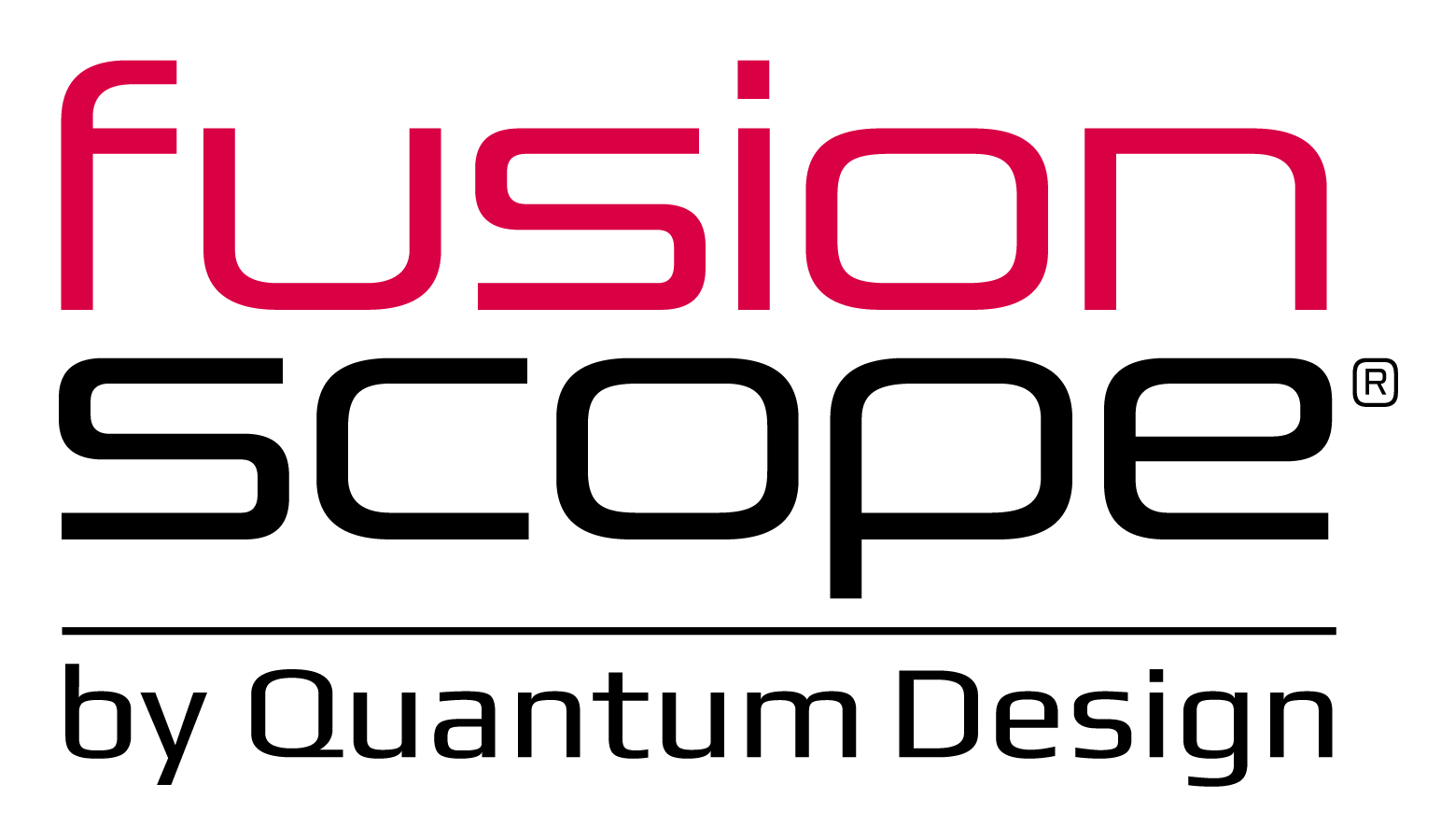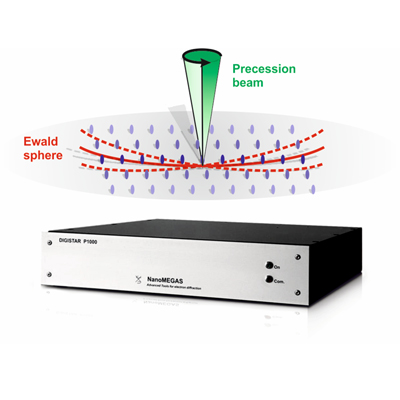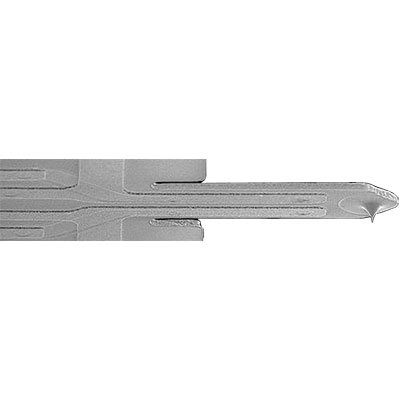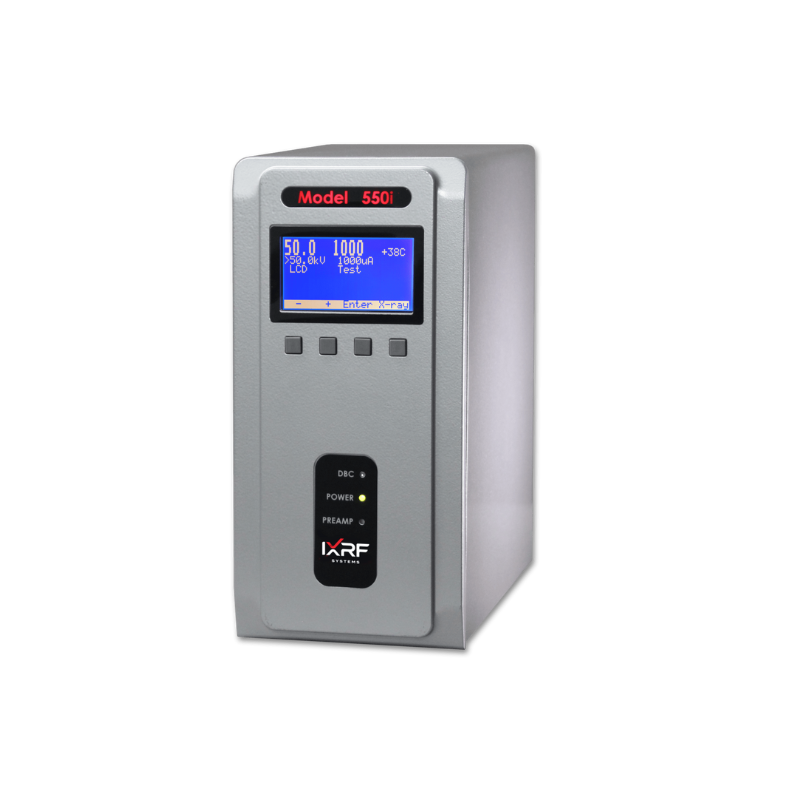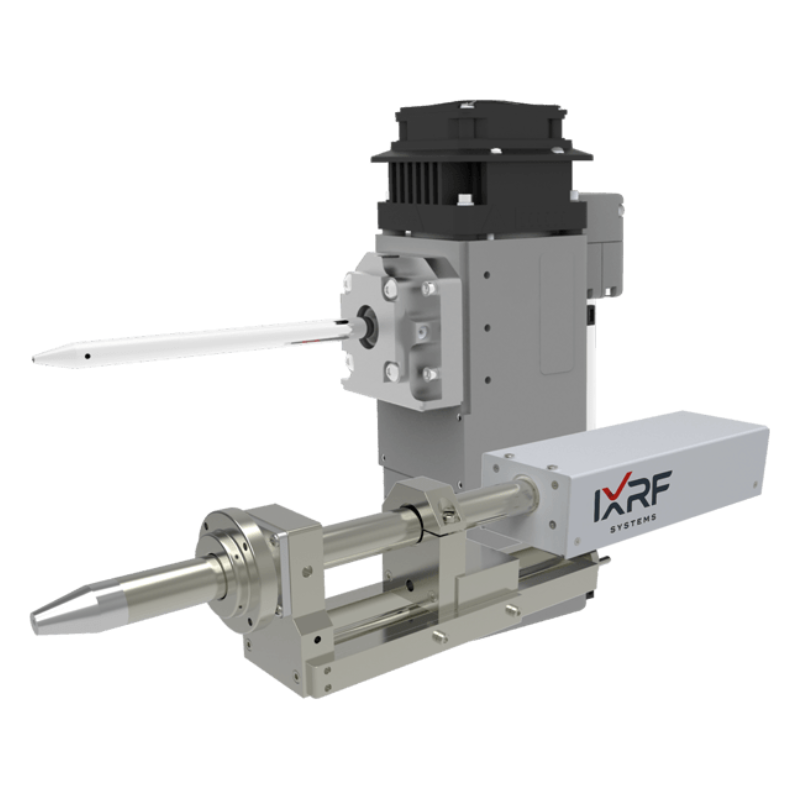- Features
- Options
- Videos
- Downloads
- Related Products
- Contact
- Back To Spectroscopy
- Back To Optics
- Back To Hyperspectral
- Back To Cameras
- Back To X-Ray
- Back To Light Measurement
- Back To Characterisation
- Back To Electron Microscopy
- Back To Magnetometry
- Back To Ellipsometers
- Back To Cryogenics
- Back To Lake Shore
FusionScope™ from QD Microscopy
Easy to use Correlative AFM/SEM Microscopy Platform
FusionScope is an easy-to-use correlative microscopy platform designed from the ground up to add the benefits of SEM imaging to a wide range of AFM measurement techniques.
Combine the complementary strengths of AFM and SEM like never before! The FusionScope fully integrates a wide range of advanced AFM measurement techniques with the benefits of SEM imaging. Seamlessly image your sample, identify areas of interest, measure your sample, and combine your imaging data in real time.
Acquire detailed Material Characterisation of your samples, including structural, mechanical, electrical, and magnetic properties. Carry out high-level Quality Control of manufactured parts or perform Failure Analysis on electrical components or semiconductor devices. Easily characterise Nanostructures such as nanowires, 2D-materials, and nanoparticles. FusionScope gives you full control to locate your area of interest, position your probe, and perform a wide range of measurements.
FEATURES
- Material Characterisation
- Quality Control
- Failure Analysis
- Nanostructures




